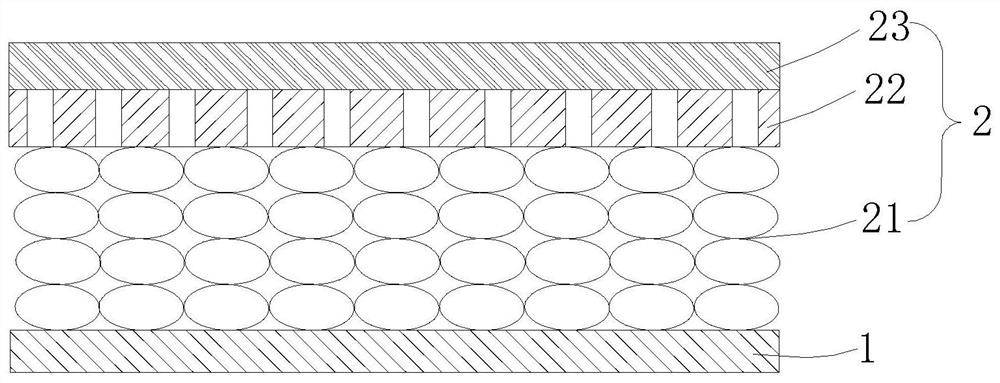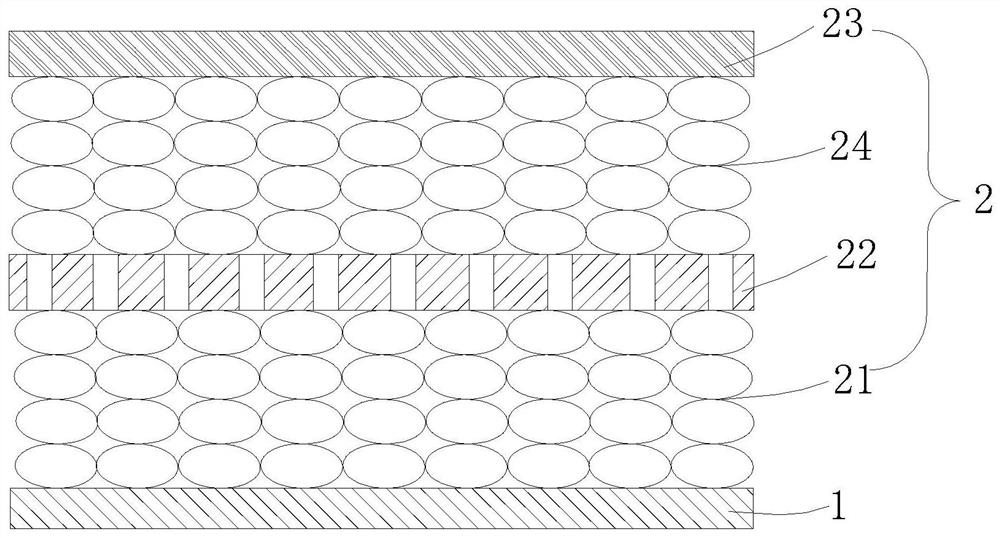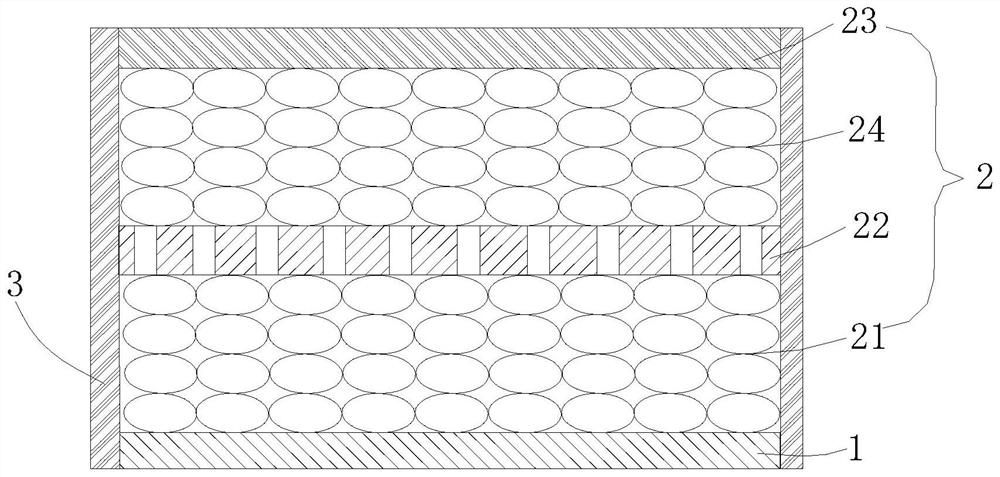High-thermal-conductivity graphite-metal composite material and preparation method thereof
A technology of metal composite materials and high thermal conductivity graphite, which is applied in the field of thermal conductivity materials, can solve the problems of inability to meet the heat dissipation performance requirements of electronic components for heat sink materials, low thermal conductivity, low strength, etc.
- Summary
- Abstract
- Description
- Claims
- Application Information
AI Technical Summary
Problems solved by technology
Method used
Image
Examples
preparation example Construction
[0027] The invention provides a method for preparing a high thermal conductivity graphite-metal composite material, comprising:
[0028] S1, providing a substrate, on which a sub-prefabricated block is arranged, the sub-prefabricated block includes a first graphite layer, a metal layer and a second aluminum layer stacked on the substrate, the substrate is the first aluminum layer, the metal layer is provided with through holes, the melting point of the alloy formed by the metal atoms and aluminum atoms in the metal layer is not higher than the melting point of aluminum, and the prefabricated block is obtained;
[0029] S2, hot pressing and sintering the prefabricated block at 500°C to 750°C, so that the first aluminum layer and the second aluminum layer are melted to form aluminum liquid, and the aluminum liquid passes through the through hole Combining with at least part of the metal atoms in the metal layer to form an alloy liquid, and the aluminum liquid and the alloy liqui...
Embodiment 1
[0057] Take flake graphite powder with a particle size of 500 μm, sodium chloride and a small amount of silicon powder and mix evenly to make a mixed powder. Calculated by the total weight of the mixed powder, sodium chloride accounts for 75 wt%, and silicon powder accounts for 5 wt%. Put the mixed powder into a vacuum carbon tube furnace, evacuate to a vacuum degree of about 10Pa to 220Pa, heat up at a rate of 15°C / min, raise the temperature to 1100°C, keep it for 60min, and then cool down to room temperature with the furnace. Take out the high-temperature-treated mixed powder, put it into a beaker filled with deionized water, put the beaker filled with the treated mixed powder and deionized water into a drying oven, set the temperature at 85°C, keep it warm for 30 minutes, take out the beaker and dry it. Pour off the aqueous solution of sodium chloride, re-pour deionized water and repeat the above operations, wash the mixed powder 5 times, pass the washed and dried mixed powd...
Embodiment 2
[0060] Forming the graphite composite in Example 1 on the first aluminum foil to form a sub-prefabricated block, including sequentially forming the first graphite layer, the copper mesh and the second aluminum foil on the first aluminum foil. The thicknesses of the first aluminum foil and the second aluminum foil are both 20 μm, the thickness of the first graphite layer is 2 mm, the copper mesh is 50 mesh, and the thickness is 0.05 mm. Stack multiple sub-prefabricated blocks along the axial direction into a high-precision mold to form a prefabricated block. In the prefabricated block, the mass fraction of the graphite layer is 55%, the mass fraction of the aluminum foil is 30%, and the mass fraction of the copper mesh is 15%. %. In a vacuum one-way hot-pressing sintering furnace, heat up to 630°C at a heating rate of 10°C / min for sintering, the sintering pressure is 60MPa, and the holding time is 120min. Then cool down to room temperature with the furnace to obtain a high the...
PUM
| Property | Measurement | Unit |
|---|---|---|
| thickness | aaaaa | aaaaa |
| thickness | aaaaa | aaaaa |
| thickness | aaaaa | aaaaa |
Abstract
Description
Claims
Application Information
 Login to View More
Login to View More - R&D Engineer
- R&D Manager
- IP Professional
- Industry Leading Data Capabilities
- Powerful AI technology
- Patent DNA Extraction
Browse by: Latest US Patents, China's latest patents, Technical Efficacy Thesaurus, Application Domain, Technology Topic, Popular Technical Reports.
© 2024 PatSnap. All rights reserved.Legal|Privacy policy|Modern Slavery Act Transparency Statement|Sitemap|About US| Contact US: help@patsnap.com










